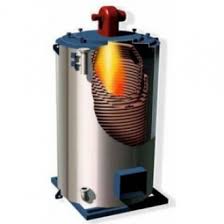
Oct . 04, 2024 10:08 Back to list
steam heat furnace
Understanding Steam Heat Furnaces An Overview
A steam heat furnace is a vital component in residential and commercial heating systems, known for its efficiency and reliability. This type of furnace operates by converting water into steam, which is then circulated throughout the building via pipes and radiators, providing consistent warmth during colder months. Understanding the mechanics, benefits, and maintenance of steam heat furnaces can help homeowners make informed decisions regarding their heating options.
The operation of a steam heat furnace begins with a boiler that heats water to a boil, producing steam. This steam rises and is funneled through a network of pipes to various points in the home or building. As the steam travels through the pipes, it condenses back into water upon reaching cooler areas, which then returns to the boiler to be reheated. This cycle of heating, condensing, and reheating continues, ensuring a steady supply of warmth.
One of the significant advantages of steam heat furnaces is their efficiency. These systems require less energy to maintain warmth compared to forced-air systems, which can lose heat through ductwork. Steam heating also provides a more uniform temperature throughout the space, as steam radiates heat consistently and does not rely on air movement, which can create hot and cold spots in a room.
steam heat furnace

Additionally, steam heat furnaces are known for their durability. With fewer moving parts than other heating systems, they tend to require less maintenance and can have a longer lifespan—often exceeding 30 years when properly cared for. This longevity makes them a cost-effective choice for homeowners looking to invest in their heating systems.
However, owning a steam heat furnace does come with its responsibilities. Regular maintenance is essential to ensure optimal performance. Homeowners should schedule annual inspections with a qualified technician who can check for any signs of wear or damage, which can include leaks, corrosion, or pressure issues. It's also important to maintain the water level in the boiler and to flush the system periodically to prevent sediment build-up, which can impede efficiency.
Another consideration is the initial installation cost. While steam heat furnaces can be more expensive to install than other systems, their long-term energy savings and durability often make them a worthwhile investment. Furthermore, with a growing emphasis on energy efficiency and environmental impact, these systems can be complemented with modern technologies, such as programmable thermostats, to enhance control over heating and reduce energy consumption.
In conclusion, steam heat furnaces offer a reliable and efficient solution for heating spaces during colder months. With their ability to provide consistent warmth and their durability, they have remained a popular choice for both old and new buildings. By understanding their operation, benefits, and maintenance needs, homeowners can maximize the efficiency and lifespan of their steam heating systems, ensuring a cozy and warm environment throughout the winter season. Whether replacing an old furnace or installing a new one, investing in a steam heat system can be a decision that pays off in comfort and energy savings for years to come.
-
High-Efficiency Commercial Oil Fired Steam Boiler for Industry
NewsJul.30,2025
-
High-Efficiency Biomass Fired Thermal Oil Boiler Solutions
NewsJul.30,2025
-
High Efficiency Gas Fired Thermal Oil Boiler for Industrial Heating
NewsJul.29,2025
-
High-Efficiency Gas Fired Hot Water Boiler for Sale – Reliable & Affordable
NewsJul.29,2025
-
High Efficiency Biomass Fired Hot Water Boiler for Industrial and Commercial Use
NewsJul.29,2025
-
High-Efficiency Biomass Fired Hot Water Boiler for Industrial Use
NewsJul.28,2025
Related PRODUCTS






















